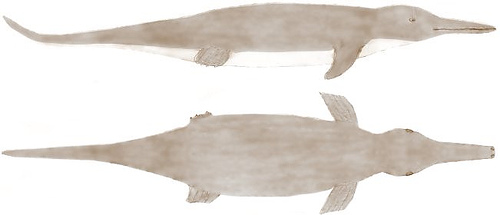
Timex had nothing on Jai Singh II. After building this 90-foot sundial, the Indian maharaja always knew the correct time to within half a second — and this was in the early 1700s.
Ben Franklin wrote, “Energy and persistence conquer all things.”

Timex had nothing on Jai Singh II. After building this 90-foot sundial, the Indian maharaja always knew the correct time to within half a second — and this was in the early 1700s.
Ben Franklin wrote, “Energy and persistence conquer all things.”

Hitler thought the moon was made of ice. The idea came from an Austrian engineer named Hanns Hörbiger, who had suggested in 1913 that most objects in the solar system were icy, apparently because they’re shiny. No one took this seriously at the time, but German socialists began to support it during the ’20s, and eventually it became official Nazi policy, an alternative to “Jewish” science.
The idea was dismissed again after the war, but it had a strange holding power — as late as 1953 more than a million people in Germany, England and the United States still believed in Hörbiger’s theory.

Fifteen-year-old Owen Burnham was walking along a Gambian beach in 1983 when he came upon a group of villagers cutting up a carcass. He says it measured about 15 feet long, with a 4.5-foot head and a beak containing 80 conical teeth. The villagers eventually sold the head to a tourist and buried the body.
Burnham’s story is a little fishy — he took extensive measurements but didn’t think to take a photo or save a sample. And now no one can find the body.
Maybe “Gambo” was a living dinosaur; maybe it was a mangled whale; maybe it never existed. At this point the only person who can shed any light is the tourist … and he’s not talking.

Ted Hustead was kind of a nut for self-promotion. When he bought a drugstore in tiny Wall, South Dakota, in 1931, he figured he could attract customers through advertising.
Maybe he overcompensated a little. There are now 500 miles of Wall Drug billboards on Interstate 90, stretching all the way to Minnesota at an annual cost of $400,000, plus signs at the North and South Poles, the Paris Metro, and the Taj Mahal. The photo above was taken somewhere in Africa in the 1950s.
The signs may be eyesores, but they’re scaring off the competition — the little pharmacy is still the only one within 500 square miles.
If you ever invent a time machine, be sure to head back to the Time Traveler Convention held at MIT on May 7, 2005. (If you’re coming from the far future, MIT was at 42.360007° N, 71.087870° W.)
The convention was covered on the front page of the New York Times, so presumably it’ll be well attended … eventually.

An optical illusion. The long lines are parallel.

Justo Gallego Martínez of Spain joined a Trappist monastery as a young man, but he had to leave in 1961 when he contracted tuberculosis. So he decided to build his own cathedral, on a plot of land he had inherited in the Spanish village of Mejorada del Campo.
He has no plans, permissions, permits or even the blessing of the Catholic Church — he’s basically been improvising for 40 years, with the help of six nephews and the occasional volunteer, using recycled construction materials, old gas drums and bricks from a nearby factory. But he’s doing pretty well — that dome is 40 meters high.
“If you think you can win, you can win,” wrote William Hazlitt. “Faith is necessary to victory.”

A photographer from Country Life Magazine reportedly took this picture while shooting a feature on Raynham Hall, a Norfolk country house, on Sept. 19, 1936. The “ghost” has become known as the Brown Lady of Raynham Hall because of the brocade dress she wears.
No one’s seen her since.

An optical illusion. The square’s sides are straight.

When sunlight is refracted through ice crystals in cirrus clouds, it sometimes produces this rare phenomenon, known as a circumhorizontal arc.
It happens only when the sun is high in the sky, so there’s no pot of gold.
(Thanks, Mysticwolf.)